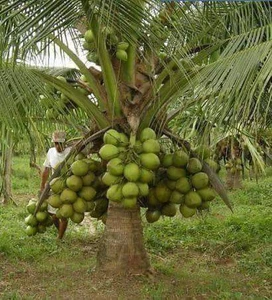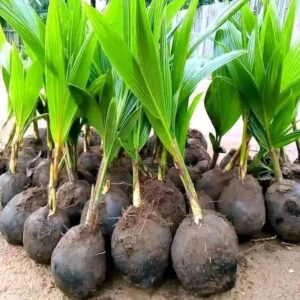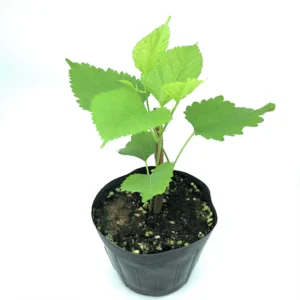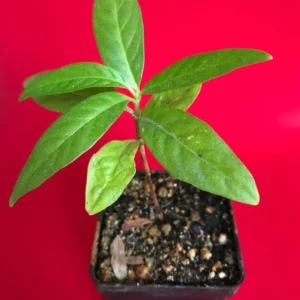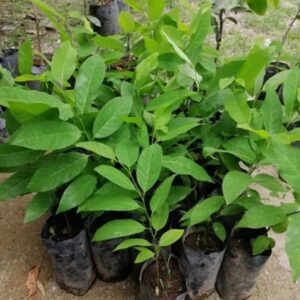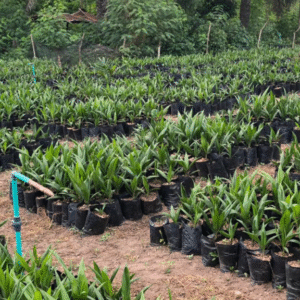🌴 Hybrid Coconut Seedling – Growing Guide
Hybrid coconut seedlings are the result of crossing tall and dwarf coconut varieties to combine the best traits of both: early fruiting, high yield, disease resistance, and better oil/water content.
✅ Key Features of Hybrid Coconut Seedlings
| Feature | Description |
|---|---|
| 📏 Height | Medium – shorter than tall varieties, taller than dwarfs |
| ⏳ Fruiting Time | Starts in 3–4 years (earlier than tall) |
| 🥥 Fruit Yield | High – 80 to 150+ nuts per year per tree |
| 💧 Water Requirements | High – consistent watering needed |
| 🌿 Lifespan | ~50 years, like tall varieties |
| 🛡️ Resistance | Better resistance to diseases and pests |
| 🔄 Pollination | Often self-pollinating but can benefit from cross-pollination nearby |
🧑🏽🌾 How to Grow Hybrid Coconut Seedlings
1. Site Selection
-
Full sun, well-drained soil (sandy loam or loamy)
-
Avoid waterlogged areas
2. Spacing
-
Ideal spacing: 8 m × 8 m or 7.5 m × 7.5 m
-
For intercropping, wider spacing (10 m) may be used
3. Planting
-
Dig a pit: 60 cm x 60 cm x 60 cm
-
Mix topsoil with compost or rotted manure
-
Plant the seedling upright and water generously
4. Watering
-
Water twice a week for the first 6 months
-
Use mulch to retain moisture around the base
5. Fertilizer Application
-
Apply NPK (e.g., 15-15-15) or specific coconut fertilizer 3 times a year
-
Organic manure like poultry droppings or compost boosts growth
6. Weeding & Mulching
-
Weed regularly and mulch with dry leaves or coconut husks
7. Pest and Disease Management
-
Monitor for pests like rhinoceros beetles and red palm mites
-
Use organic sprays (e.g., neem oil) or approved insecticides


